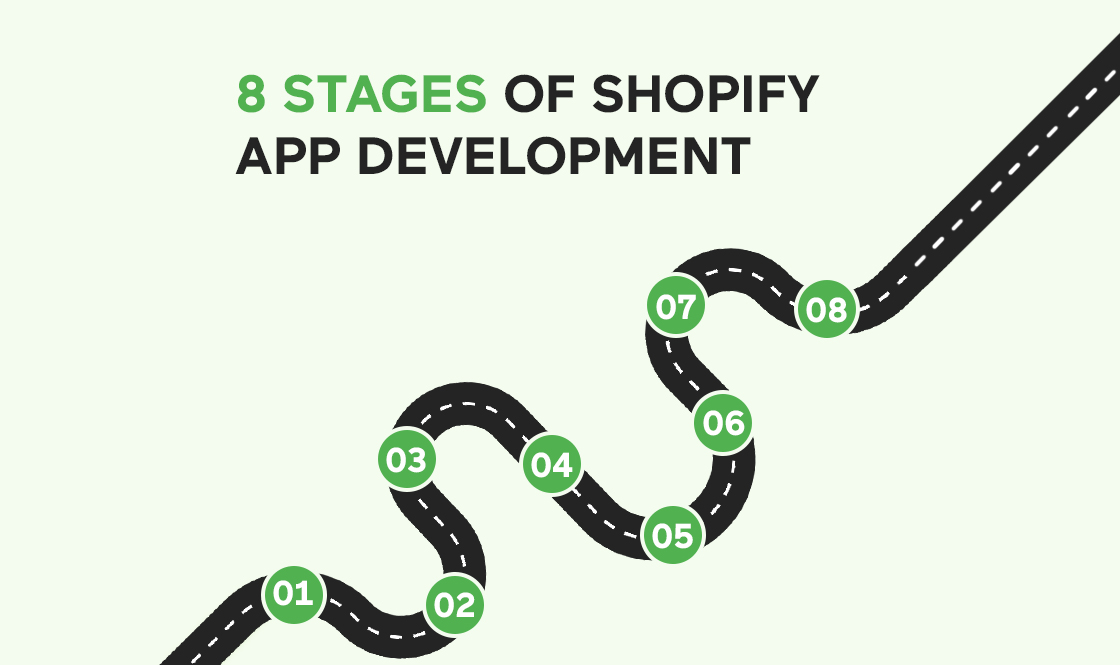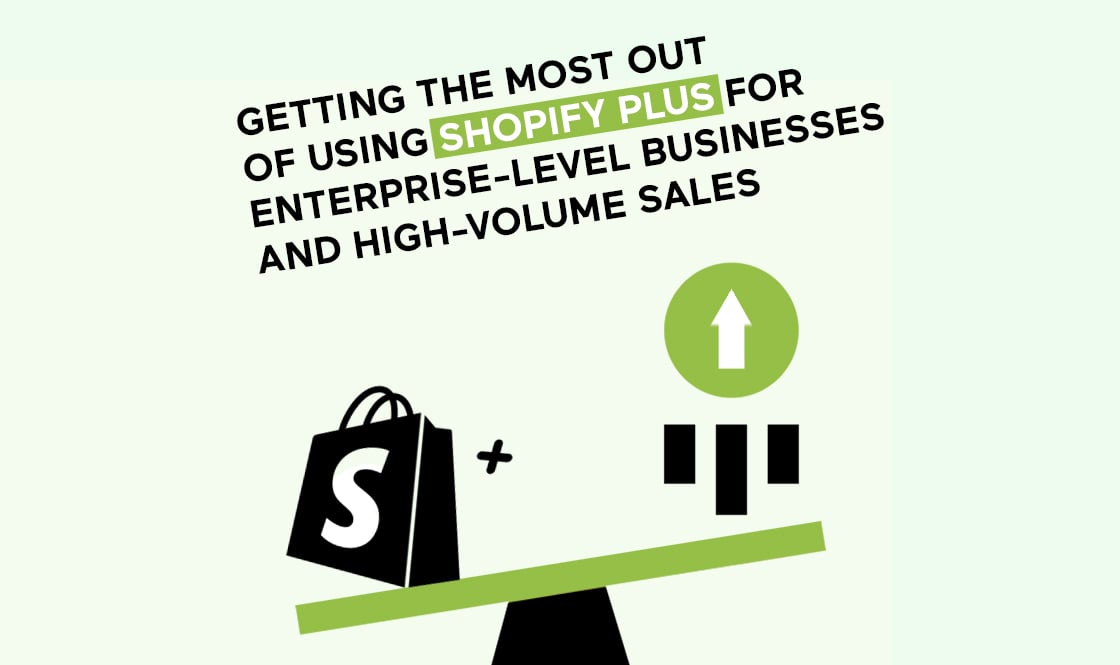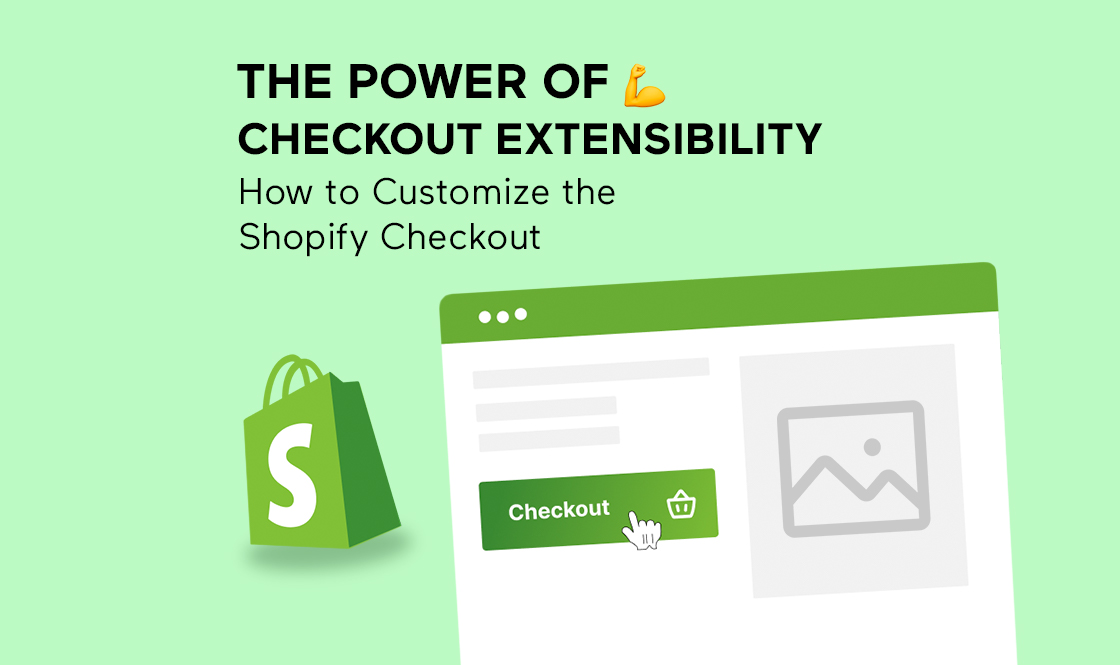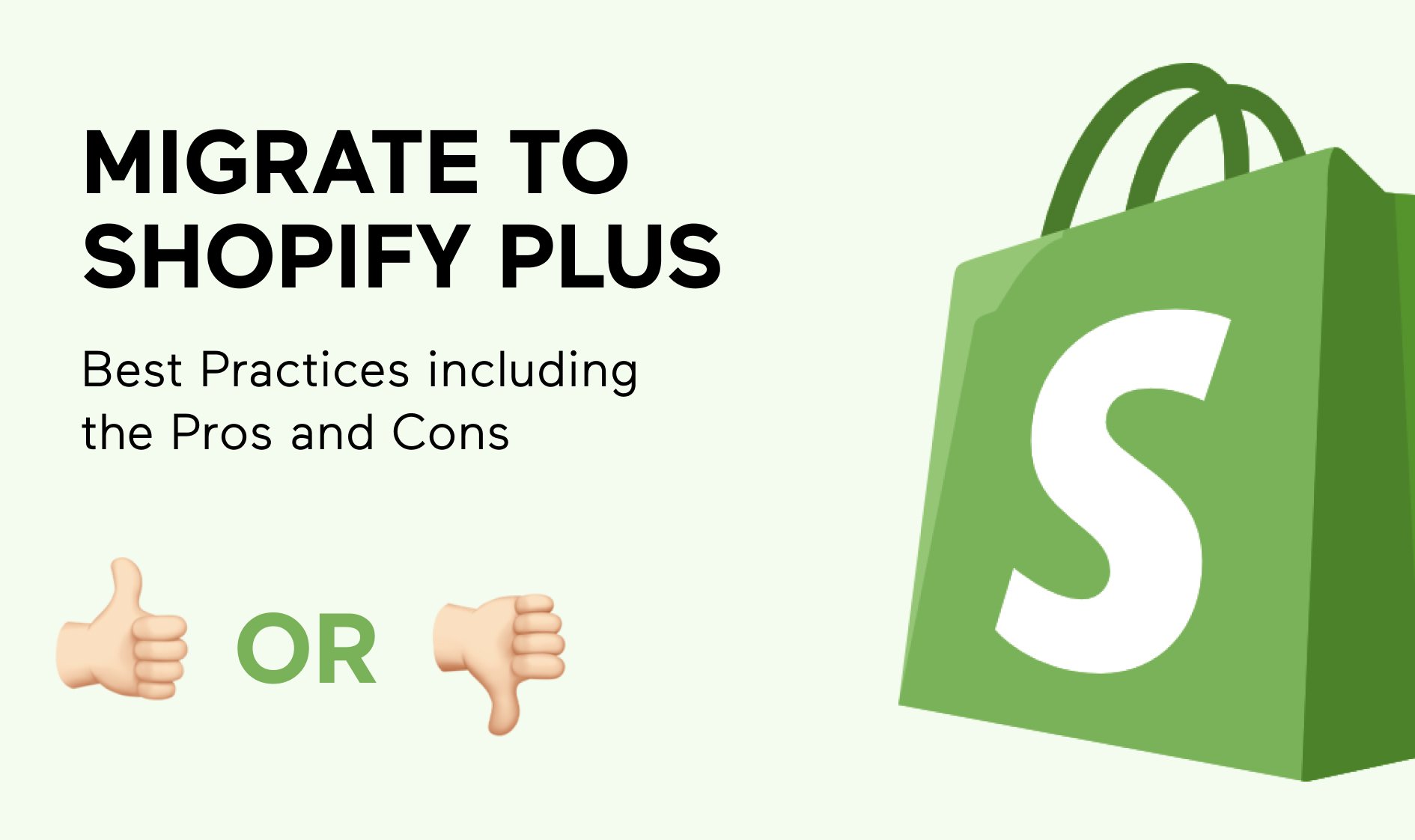
Migrating from one platform over to Shopify Plus can feel like a daunting task. We know. We have done plenty of migrations during our 12-year history as an eCommerce website development agency and they do come with their own unique set of headaches and gotchas. But migrating to a new platform doesn’t always have to be as painful as you think, as long as you are prepared with a plan. Below we will share some tactical tips and checklists to ensure a smooth transition and remove those gotchas before you encounter them.
Why Ecommerce Brands Migrate to Shopify Plus
To start and from a really high level, Shopify Plus is an all-in-one selling platform that is flexible and quick to launch for companies looking to sell their products online. Shopify constantly maintains and updates its platform to help businesses who want to streamline their eCommerce business operations. If you want to learn more about Shopify you can visit their site to see all their benefits. This article will really focus on the best practices and tactical tips for migrating a previous store on another platform over to Shopify to take advantage of all the benefits Shopify Plus has to offer.
Shopify eCommerce Migration Best Practices
Determine and Describe Your Goals Before Starting the Migration Process
The goal for an online store migration is the same for any business that’s looking to move from one platform to another and it always causes headaches and pain. Migration is tough and needs to be carefully planned, developed, executed at the right time, and then tested thoroughly.
It doesn’t matter if you are moving from WooCommerce, Volusion, Magento, or BigCommerce over to Shopify, most businesses need to extract as much current and historical information/data from their legacy system as they can and have it organized in their new home within their Shopify system. If you run your migration correctly, you will retain as much data as possible to ensure your business can continue without interruptions, you drastically reduce your customer support inquiries and your end users continue to have a seamless experience. The data most crucial to transfer correctly falls into the following buckets:
- Product. Everything involving your store’s products, including product photos (base image and also the additional images) and title/descriptions, weight, manufacturer, URL, SKUs, inventory (quantity and manage stock), configurations or variants, sales history/data.
- Collections or Product Categories. List the name, rules, and products contained within each respective collection.
- Manufacturer. Name
- CMS Pages i.e. Content/Copy. Start with your Page Title, URL, Meta description, Page Status, and Content Heading. This can include pages like your About Us, Company History, Shipping/Refund Policy pages, etc., and any marketing/sales type content like blog posts, case studies, FAQs, and more.
- Customers. All customer details including customer’s name, email, telephone, addresses (billing and shipping), purchase history, and correspondence history. Newsletter or promotion subscriber, customer group
- Orders. All current and past order statuses, along with the data connections help determine what the respective products were for each customer. These include Order ID, Order Date, Order Status, Order Products (Name and SKU), Product Pricing, Quantities, SubTotal Price, Discount Price, Tax Rate/Price, Shipping Price, Total Price, Order Comments
PLEASE NOTE that during migration there could be a period of time when you may have orders that don’t get correctly transferred to your new system or partners so you will need to manually recheck this information. If you use a service you can eliminate this issue. - Reviews. Product reviews from customers, including Creation Date, Rating, Username or customer name, Comment, Product, and Title.
- Coupons. Name, Coupon Code, Discount Type, Discount Amount
Plan the Steps for Effectively Migrating from Your Platform to Shopify Plus
A business without a plan is doomed to fail and this is the MOST important step. Comprehensive planning is the cornerstone of a smooth store migration and provides that final checklist to make sure you’ve dotted all your i’s and crossed your t’s. Each store migration is unique and requires the movement of a lot of data between the legacy system and the Shopify system so it can be really easy to miss items if not properly tracked from the start.
Think about your migration and what plans you can make.
Start by considering:
- All the data that needs to be moved
- How is it processed or cleansed
- How you will deal with the downtime in between the migration when you may get customer orders
- In what sequence are the operations performed
- How data should be mapped out
Again, I can safely say that no two migrations are ever the same. Every platform like Magento, BigCommerce or Volusion has a different setup and each online business has unique data, features, and requirements, so you must map out a plan for your specific system’s data and your goals and then expect some road bumps and do-overs.
To start your planning, we highly recommend using a store migration service to transfer data between the two eCommerce platforms.
In theory and we have seen this at the start of our careers, you could complete your migration manually by hand or by using CSV files. But we believe paying for a migration service from a data migration service provider is well worth the money and doesn’t have to be super expensive. There are a number of them on the market that we have used and have no affiliation with but we are happy to make a recommendation to one of them once we learn more about your specific requirements. We have seen migration fees typically range between $100 and $1000. It will be well worth it in the long run and save you a lot of time having to manually enter data or check it.
Here are some reasons it’s worth it to invest in a migration service and use a Shopify migration expert:
- They already have tools and processes that do the work much more quickly and accurately than setting it up from scratch or doing it by hand.
- The service will use the platforms’ APIs giving it access to more data than you can extract through the store admin.
They will maintain many data relationships, such as the orders connected to respective customers. That sort of data is easy to lose when transferring data with CSVs. - You can keep selling while you migrate and the process of migrating data won’t have an effect on the migrated store.
- These services aren’t just software. They have a competent consulting component, allowing their staff to get into the particulars of your implementation and keep as much information as possible. This staff will typically work with the internal team you have running your eCommerce store or the agency/freelancer you choose to work with. One example we encountered recently was a store migration from Volusion to Shopify. Many of the products in Volusion had dozens of data elements stored in custom fields. We worked with a migration service to make it possible to map all of the Volusion fields to the Shopify metafield, and ultimately made it possible to fit the data into the Shopify product templates.
- Once the connections are created between your legacy store and your new Shopify store, PLEASE FOLLOW THIS STEP. Make sure you are able to run the migration process multiple times. In an ideal world, you would run the migration at least three times and sometimes more often. Think of it like this. The first run is just to get the data into Shopify. Then you’ll go into Shopify and set up the store experience using the first run’s data. The second run would be a test run to see how updating the data from the legacy store impacts the Shopify setup that you’ve made. And the third run, and hopefully the last, is the final data transfer before pointing the traffic from the legacy store to the new Shopify store. This run pulls in all recent data like new customers and orders since the test data migration. Remember as well that this process of running a migration can take a lot of time to process and you must give yourself enough time to do all the necessary setup, testing, and post-migration adjustments. Keep in mind that most migrations take more than a month to plan and a few hours or days to actually run. The more data you have to transfer, the longer it will take to get all the data migrated over so once you get it running, you want to make sure you did the setup correctly. Don’t worry, you won’t always get it right the first time.
Create and Adhere to a Checklist for Migration
There are some basic items to consider for your migration, and we can provide the following high-level checklist:
- Sign up and set up your Shopify Plus account.
- Create your store in Shopify.
- Identify everything that needs to be migrated.
- Decide on your ideal migration method: manual via copy and paste (ouch), CSV files (meh), 3rd Party Shopify apps (much better), migration service (can be very good), or admin API (nice).
- Prepare and export data from your current system. Import everything into Shopify Plus and then test.
Bonus Tips for Shopify Plus Migration
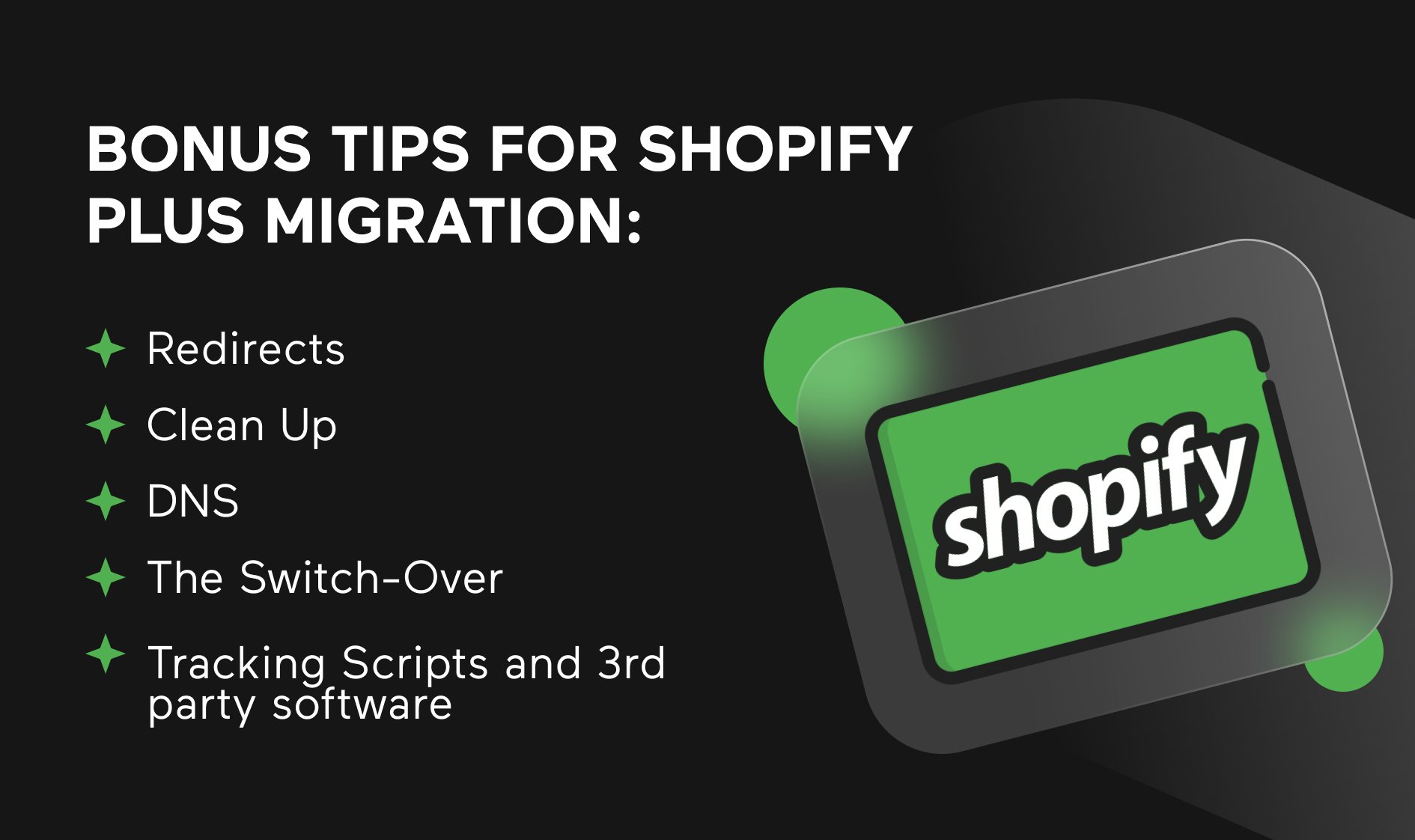
Here are a few additional tips, considerations, and issues you might face with your Shopify Plus migration that you can be prepared for:
Redirects
Setting up your 301 redirects is an important consideration in any migration. A 301 redirect is a permanent server-side redirect that tells the browser to open up a new URL that was associated with a previous one. Let’s say on our old Spiral Scout site, we have a general case studies page like www.spiralscout.com/cases and on my new site, I want to use a different URL for my case studies page. I would create a 301 redirect to point my old case studies URL to the new Spiral Scout case studies page. Thus, it tells the visitor that the page has moved and redirects the browser to your new pages. Since it is a permanent redirect, Google then changes the URL of the page in its index to avoid ever using the 404 redirect which is the page not found one, I am sure most of you have seen from time to time. Instead, your visitors see a smooth, consistent user experience, and you don’t risk confusing and possibly losing customers during or after the migration. And you don’t lose the SEO benefits like Page Rank and SEO Juice you may have built up which is another topic together.
Clean Up
Just like when you move from one home to another or Springtime hits, you need to do some analysis, gut checking and re-organizing as you plan your migration to Shopify Plus and throw out some of the things that you are not using anymore. I would do this cleanup post-migration since it’s a good time to go through your previous data to see what’s essential and what isn’t. Removing or reorganizing unnecessary files makes it easier to manage and maintain your new store over the long run. Deleted items like unused and outdated pages, plugins you used previously, old themes, old testing sites, products, bloated data sets you are not using, blog posts that cannibalize traffic from your highest ranking blog posts, and images that aren’t great quality.
Another good area to clean up is your product imagery. This is a good time to ensure that all your product photos are the same size, compressed correctly and the quality of the photos is as high as you can make it since this impacts page load times and your customer’s experience with your brand. We built a robust Conversion Rate Optimization Checklist that has over 200 tricks and tips to check for or implement to increase your sales and user experience while building your new eCommerce site that we can share access to with you.
DNS
One of the last steps of Shopify Plus migration is to edit the DNS servers for your domain to stop directing customers to your legacy platform and to now point to your Shopify servers.
The Switch-Over
The switch-over is done by changing your DNS to point customers to your Shopify Plus store. When you amend your DNS, your new site can take some time to update across the internet so don’t be alarmed. In some cases, up to a few hours, so during that time, customers will be going to both your legacy store and your Shopify store. I would recommend that you do this switchover during a time that you know your site has the least amount of traffic so ideally during the middle of the night. Once the switchover is complete, you may need to manually update the Shopify store with any purchases made on the legacy store.
Tracking Scripts and 3rd-Party Software
The last thing you will want to check is your tracking scripts or 3rd party software that you may have had on your previous site and confirm you have the correct tracking and embed codes set up on your new Shopify site. This may include Google Analytics, Hotjar, HubSpot, or any of the software you used previously so there is not a gap in the data that you are collecting or sending to these services.
Should you Migrate to Shopify Plus For Your Ecommerce Business?
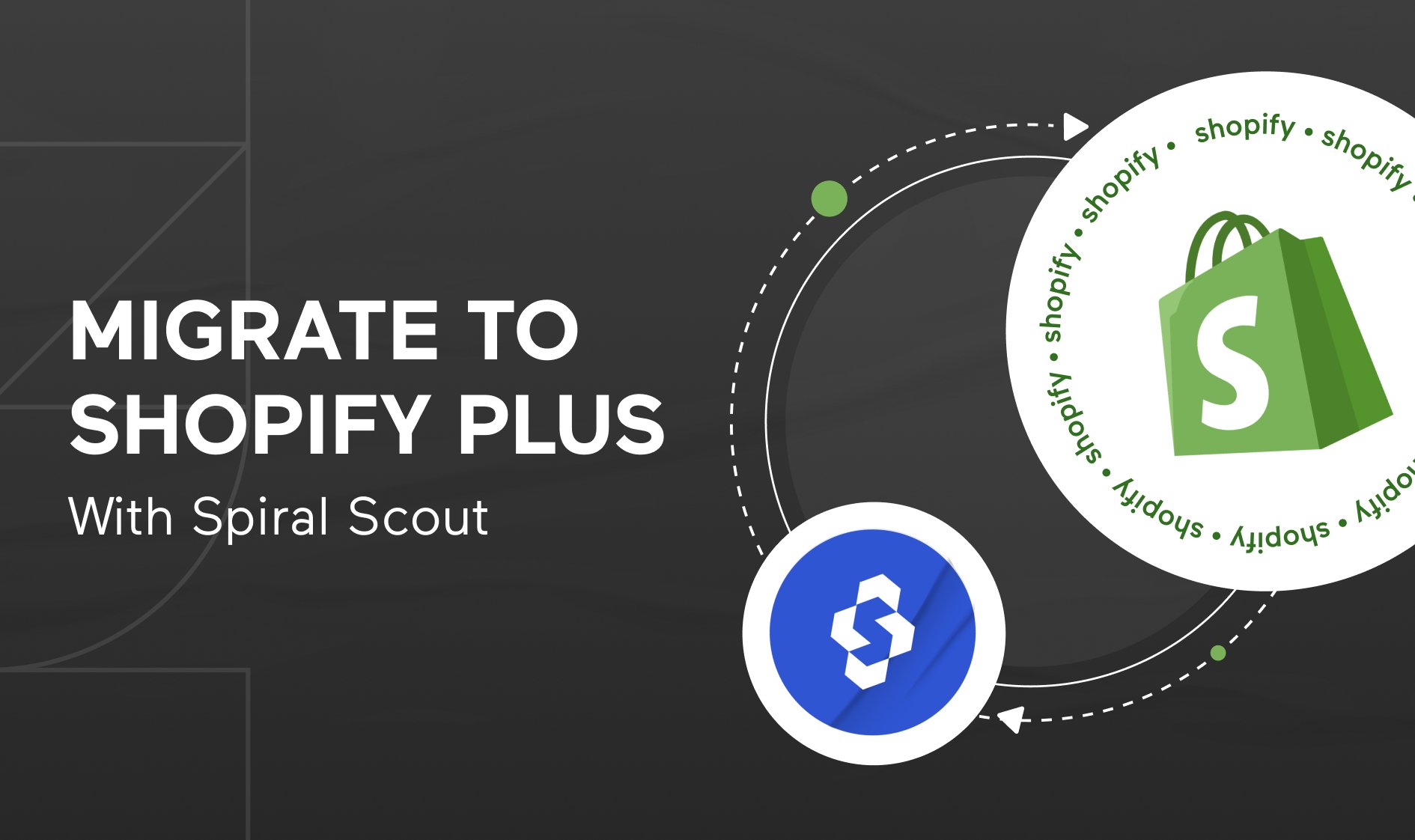
That could be the million-dollar question. We can’t decide that for businesses but we can give you an overview of what it takes to migrate a store from a current eCommerce platform to Shopify Plus. You can probably see that the migration requires a lot of work and planning upfront, but if your business is growing rapidly, moving to Shopify Plus is something that you should consider.
Shopify Plus migrations can be simple or incredibly complex, and the learning curve is pretty steep if you are doing the migration planning and execution for the first time by yourself on your business storefront or the company you work for. If you have questions, we can help answer them. Contact our software development company to set up a time to speak and even if we don’t end up working on a migration together, we hope that the 15-30 minutes we share together will leave you better off and with more confidence than before we spoke. Our Shopify Plus experts have seen the good, the bad, and the ugly, and hopefully, our past experience can keep you from making some of the inevitable mistakes that happen during your typical migration.

